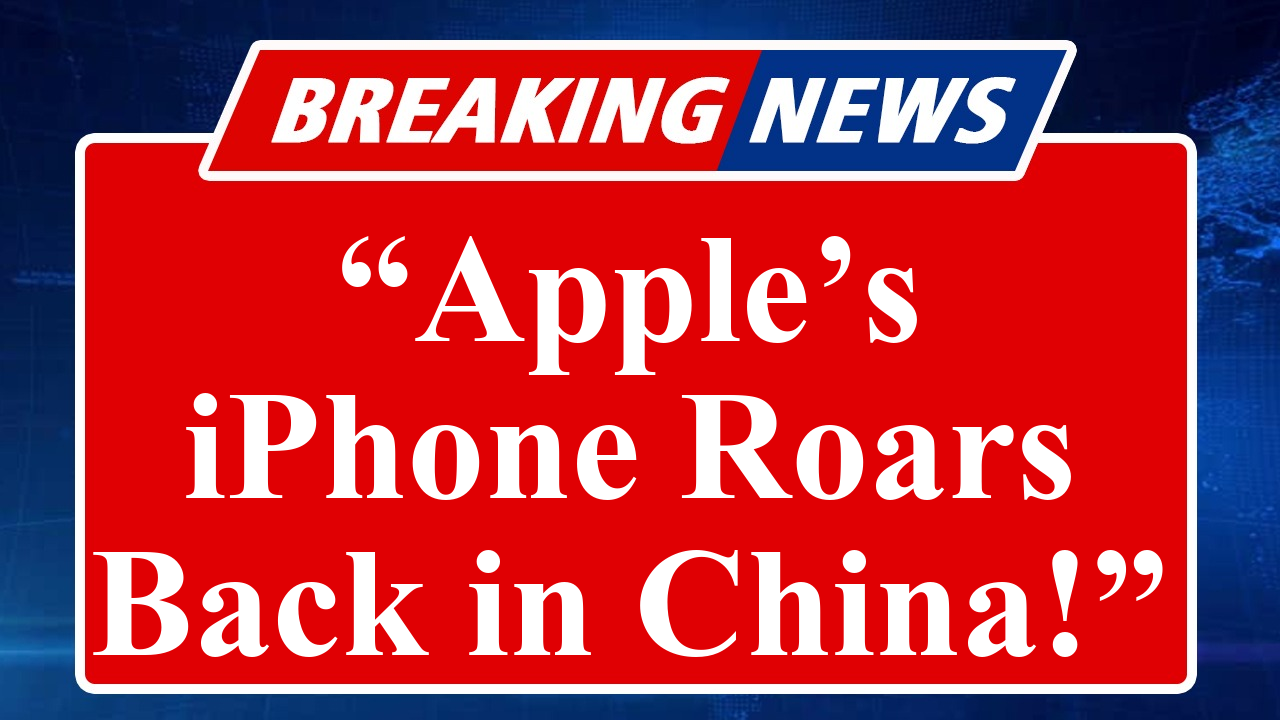“Apple’s iPhone sales in China rose 8% in Q2 2025, marking the first growth in two years, driven by aggressive pricing, trade-in programs, and the iPhone 16’s appeal. Despite Huawei’s dominance and geopolitical tensions, Apple’s strategic moves during the 618 shopping festival fueled a comeback, though sustaining momentum remains uncertain amid a cooling market.”
Apple’s Strategic Triumph in China’s Smartphone Market
Apple Inc. has staged a remarkable recovery in China, its third-largest market, with iPhone sales climbing 8% year-over-year in the second quarter of 2025, according to Counterpoint Research. This marks the first growth in the region since Q2 2023, ending a two-year decline driven by fierce competition from domestic rivals like Huawei and Vivo, as well as geopolitical headwinds. The resurgence was fueled by well-timed promotions, particularly ahead of China’s mid-year 618 shopping festival, where e-commerce platforms like JD.com and Tmall offered discounts of up to 2,530 yuan ($351) on the iPhone 16 lineup.
The iPhone 16, 16 Pro, and 16 Pro Max emerged as top-selling models, with JD.com leading online sales, highlighting the critical role of digital channels in Apple’s China strategy. Additionally, Apple’s participation in a government-backed subsidy program, offering up to 2,000 yuan ($278) in discounts, encouraged consumers to upgrade. An enhanced trade-in program, which increased the value of older iPhone models, further boosted demand, particularly in May, though June’s festival results remained flat year-over-year.
Despite this success, Apple faces significant challenges. Huawei, with a 12% year-over-year sales growth, maintained its top spot in China, while Vivo secured second place despite a 9% decline. Apple ranked third in overall unit shipments, a notable achievement given the market’s projected low-single-digit growth for 2025. However, analysts warn that sustaining this momentum could be difficult. Counterpoint Research notes that weak consumer spending and an aging iPhone 16 cycle may hinder sales in the second half of 2025. Additionally, U.S.-China trade tensions, including pressure from former President Donald Trump to shift production to the U.S., pose logistical challenges given China’s entrenched role in Apple’s supply chain.
Apple’s strategic pricing and adaptability to local market dynamics demonstrate its resilience. For instance, the company’s decision to join China’s subsidy program, after initial reluctance, reflects a pragmatic approach to countering Huawei’s aggressive product launches and loyal customer base. Yet, regulatory pressures, such as restrictions on iPhone use in government-linked workplaces, and a lawsuit alleging Apple misrepresented demand stability in China between 2022 and 2023, add complexity to its operations.
The broader Chinese smartphone market remains challenging, with foreign-branded phone shipments, including Apple’s, dropping 9.7% year-on-year in May, according to the China Academy of Information and Communications Technology. Apple’s ability to navigate these headwinds through targeted promotions and product innovation will be crucial to maintaining its position. Investors, who have seen Apple’s stock decline 15-17% in 2025, are cautiously optimistic about this rebound, though concerns about tariffs and demand fatigue persist.
Disclaimer: This article is based on reports from Counterpoint Research, TechInsights, and other publicly available sources. Information is accurate as of July 7, 2025, and subject to change. Readers are advised to verify data independently before making investment or purchasing decisions.

